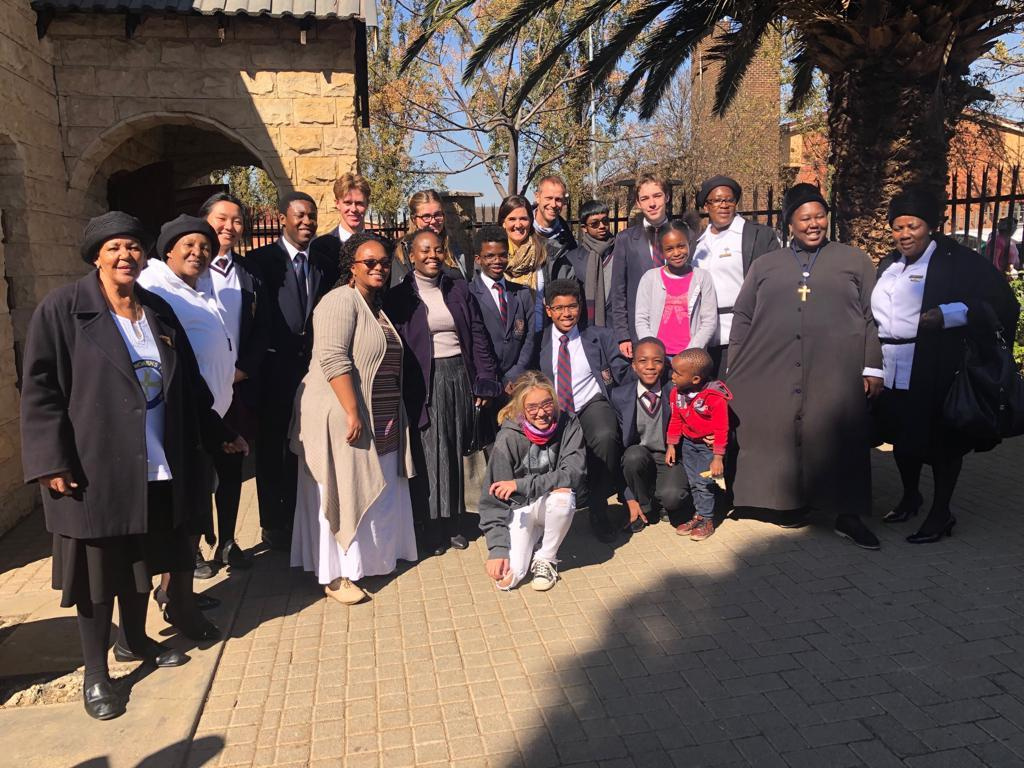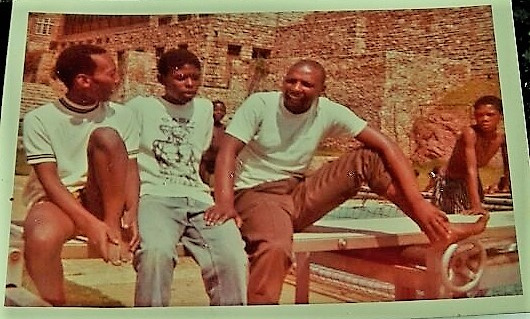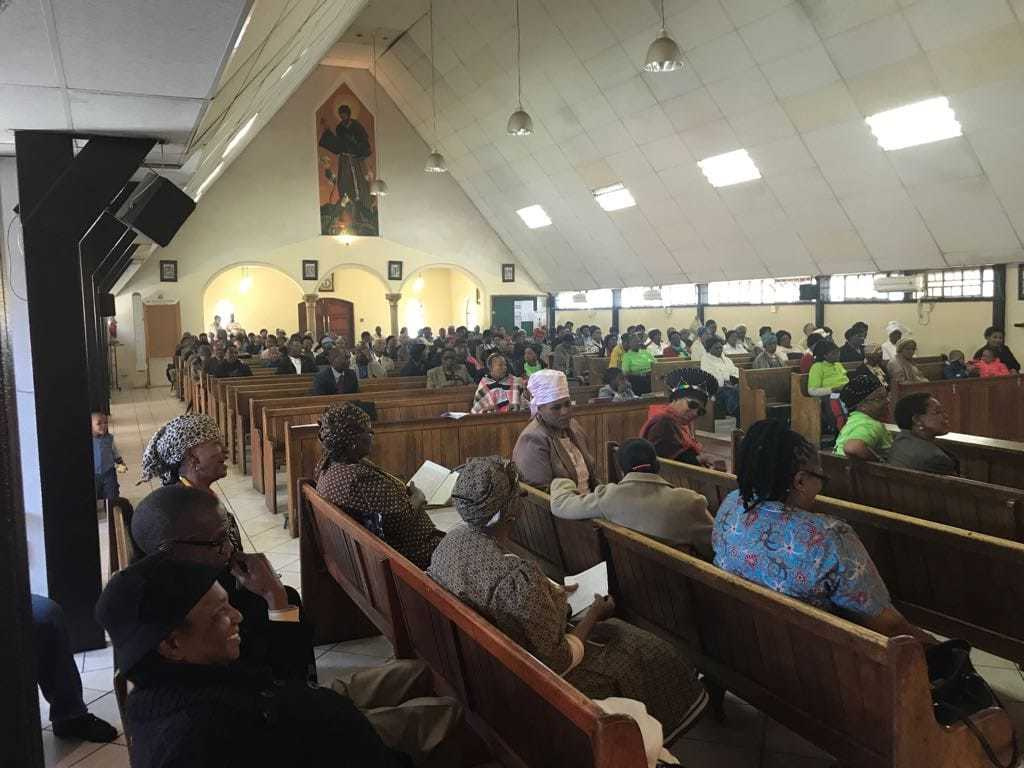St John's College celebrated Youth Day and commemorated the Soweto uprising, which started on 16 June 1976, with a small group of students and parents attending Mass at St Francis of Assisi Anglican Church in Moroka, Soweto. This was the latest in a series of interactions between the College and the parish of St Francis.
The relationship between St John's College and the St Francis parish dates back many years. The Community of the Resurrection features prominently in the history of both St John’s and St Francis. As everyone in the College community knows, the fathers of the Community of the Resurrection, an Anglo-Catholic religious order based in Yorkshire, England, ran the College from 1906 to 1935. During that period, they rescued our school from almost certain extinction: the school had substantial financial debts and enrolment had been dwindling steadily, such that there were only about forty boys left in the school in 1905.
For three decades, Fr James Okey Nash CR and his brethren, for the love of God alone, rendered service which made possible the survival and extension of the College. They moved the school to Houghton and started the process of constructing the magnificent buildings and developing the grounds of which we are so proud today. Above all, they instilled the Anglo-Catholic ethos which remains the hallmark of the College.
The Community of the Resurrection also took charge of the Anglican parish of Christ the King in Sophiatown, the famously vibrant residential area then located on the western outskirts of Johannesburg. Through the Community of the Resurrection, links developed between St John’s and Christ the King parish. In the 1930s and 1940s, College boys visited Sophiatown on Friday evenings to interact with boys of the local community. Collections taken at the College’s annual carol service were donated to the Sophiatown parish. The relationship between St John’s and Christ the King was particularly strong in the 1940s and early 1950s, when Fr (later Archbishop) Trevor Huddleston CR (later chairman of the Anti-Apartheid Movement in the United Kingdom) was the parish priest and also briefly served on the College Council.
In the mid-1950s, the apartheid government implemented the Native Resettlement Act, under which black communities were forcibly removed from areas such as Sophiatown to ‘locations’ or ‘townships’ outside the ‘white’ cities. Starting in 1955, Sophiatown was demolished and the residents were relocated to areas such as Meadowlands and Moroka. Hugh Lewin, who was in LV at the College in 1955, wrote an essay called ‘To Meadowlands’ (published in The Johannian) about these forced removals.
In 1961, the apartheid government ‘resettled’ a group of people from Sophiatown in the desolate area known as Moroka. The nearest Anglican Church was St Hilda’s in Senaoane, where Fr CP Molefe was the rector. Fr Molefe assisted the Moroka community in getting a classroom in a local school, where they could congregate for services. On 25 February 1962, Fr Francis Blake of the Community of the Resurrection sang the first Mass for this parish. In September 1962, a parish council, with Messrs Abel Molefe and Phillip Lefatola as churchwardens, was set up. (In the early 1980s, a member of the Molefe family, Benedict, was to become one of the first black boys to be enrolled at St John’s College.)
With a donation from the Society for the Promotion of the Gospel, the parish was eventually able to build their own church – St Francis of Assisi, Moroka. The church was dedicated on 28 June 1964 by the Archbishop of Cape Town, the Most Revd Robert Selby Taylor. A plaque commemorating the work of Fr Francis Blake CR in Moroka is on display in the garden of St Francis of Assisi church.
For many years, it was customary for youths from St Francis parish to visit St John’s on 16 December annually. It was a festive occasion around Long Walk Pool, at the end of which shoeboxes of Christmas gifts collected by St John’s boys were handed to the visitors. Regrettably, these visits came to an end in the late 1970s.
On Sunday 29 October 2017, a group of College boys, led by Mr Lewis Manthata and Dr Pretorius, visited St Francis to celebrate Mass with the local community. On that occasion, Benedict Molefe OJ was present, resplendent in his College honours blazer. (He was a great athlete and cross-country runner.) The St Francis parish reciprocated by coming to visit St John’s for Mass on Human Rights Day, 21 March 2018. Last Sunday’s excursion to St Francis by the St John’s contingent was the latest episode in this series of interactions.
This year, June 16 coincided with the Solemnity of the Holy Trinity. Perhaps appropriately, the Gospel reading came from St John. Our boys joined lustily in the singing of the hymns, especially ‘Guide me O Thou Great Redeemer’.
After Mass, Dr Pretorius (Chairman of the College’s Heritage Committee) was invited to address the congregation. He spoke about the historical relationship between St John’s and St Francis, and reflected on the significance of June 16 in the recent history of our country. Then we were treated to delicious soup and sandwiches, before we made the homeward trip.
The visit to St Francis was a wonderful occasion of remembering our history, some of it difficult and complex, other aspects hopeful and enlightening. St John’s expresses its thanks to the congregation of St Francis, and we hope to continue strengthening ties in the future. We think that this event has the potential to develop into a marvellous celebration of community and family.



